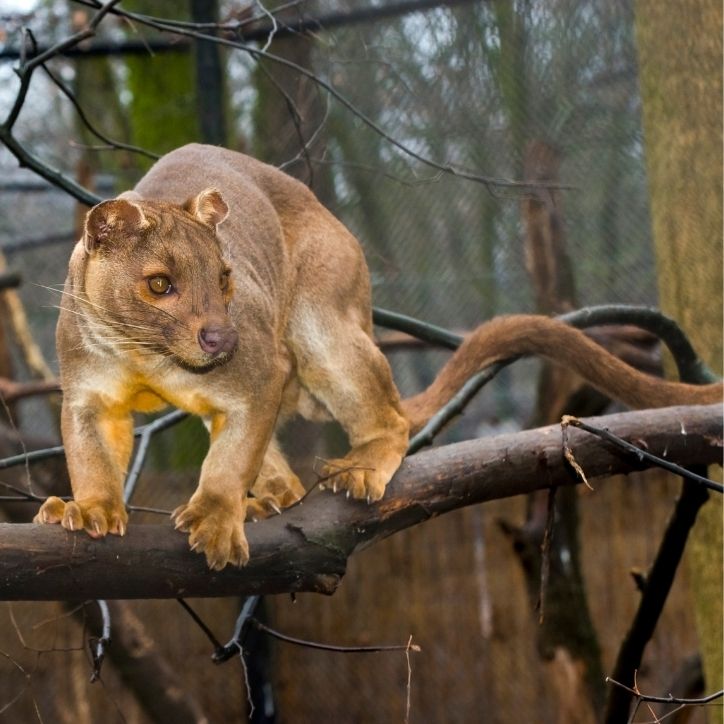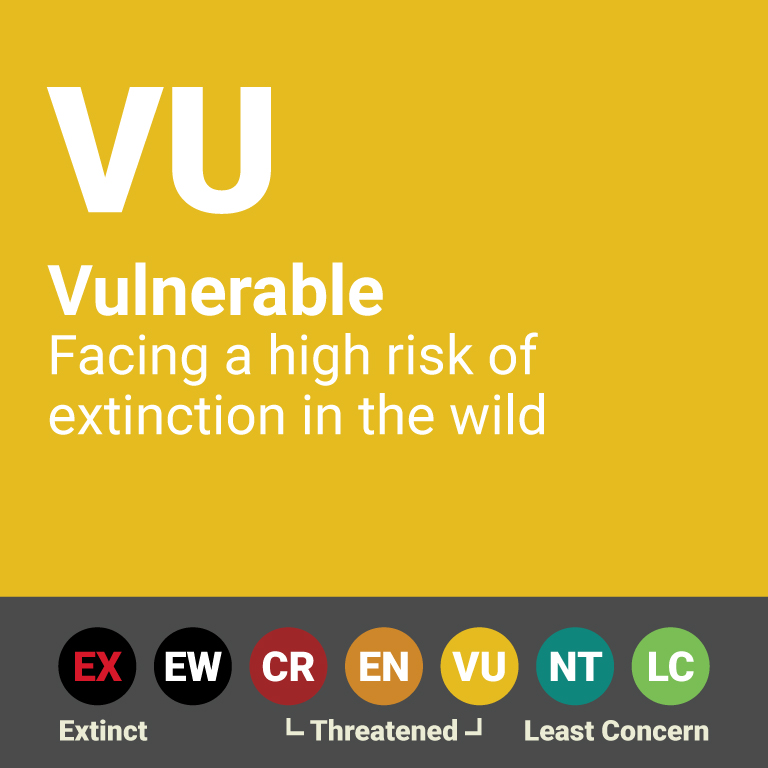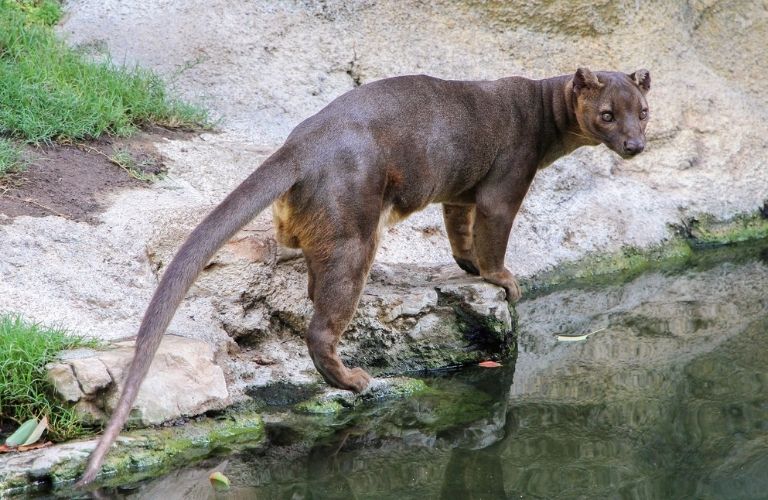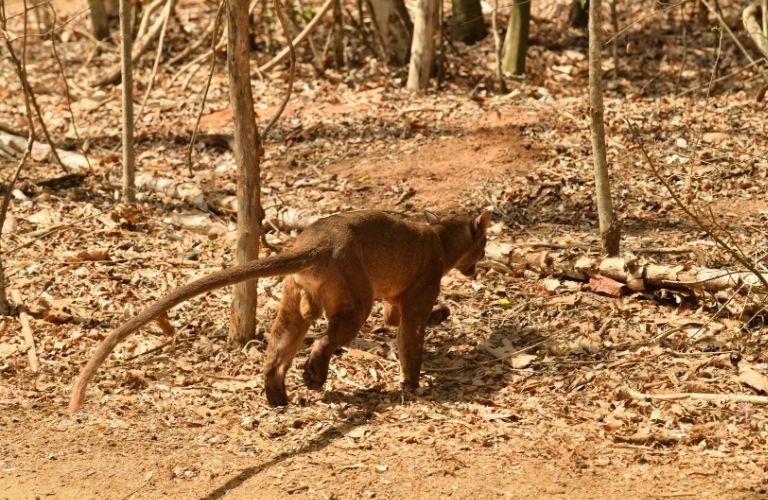In Madagascar, the island of ecological wonderment, lurks a mammal of immense intrigue and enigma: the fossa. This is an elusive animal that puzzled scientists for years as they strived to decipher what it was. Despite looking like a mashup of a cat, a dog, and a mongoose, the fossa belongs to a standalone family called Eupleridae.
A crucial Madagascan predator and a key player in the island’s ecosystem, we’re thrilled to unravel its mystery!
Diet
The fossa is a carnivorous mammal known to prey ferociously on lemurs. An agile hunter on the ground and atop trees, it also feeds on small mammals, birds, and reptiles. The fossa hunts during the day and at night; it chases its prey across the terrain, guided by a keen sense of smell, before capturing it with its sharp, retractable claws. It then deals it a last blow with its perfectly adapted teeth, grasping and killing it with strong canines and tearing the meat apart with sharp molars.
Habitat
Fossas are forest dwellers endemic to Madagascar. They inhabit various types of forests, from the lush rainforests to the dry deciduous woodlands. These forests provide ample cover for them.
Although they can thrive in both primary and degraded forests, fossas prefer undisturbed areas with dense foliage where they can find plenty of prey and raise their young.
Size and Weight
The fossa is the largest carnivorous mammal on the island. Adult males typically weigh between 13 and 22 pounds and measure about 28 to 31 inches in body length. Females are slightly smaller, weighing around 11 to 15 pounds.
This build adds to the fossa’s hunting stealth; its skull and powerful jaw muscles enable it to catch and consume prey effectively.
Young fossas are born small and blind. The pups spend their first one or two years in the tender care of their mothers, learning to leap, climb, and hunt as early as four months.
Migration
Fossas are territorial animals with large home ranges that they patrol regularly. Although non-migratory in the traditional sense, they occupy territories that span several square miles. Fossas travel great distances within their territory to hunt and find mates.
Conservation Status
Currently, the fossa is listed as “Vulnerable” on the IUCN Red List. Deforestation and human encroachment have reduced Madagascar’s initial forest cover to less than 10%, directly affecting fossa habitats. Illegal hunting and competition from other feral animals intensify their plight.
At present, conservation efforts are focused on protecting their natural habitat, enforcing hunting regulations, and educating local communities about the importance of fossas in maintaining ecological balance.






